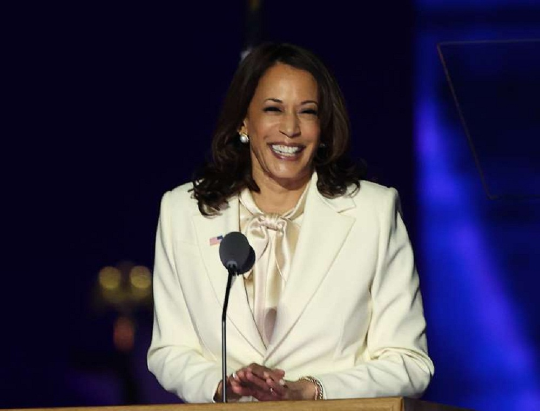A Woman Vice President? That's Not Remotely Enough
Michele Goodwin | 11 November 2020
Democrats expected a blue wave for the House of Representatives and Senate. Many are disappointed that the results did not manifest in the groundswell predicted by pollsters who prophesied Democrats would flip the Senate. Yet, the swell in voting generally, and the election of more women at the state and federal levels, and women of color specifically, are worth thinking about. Most of these women ran on a Democrat ticket.
More women, including Native American and Black women, will serve in the U.S. Congress next year than ever before. Most recent counts show 129 women joining the House and the Senate. Even while the majority of those are incumbents, real gains were made, during the 2020 election. But is it enough? Not by a longshot.
Even with increased numbers of women in office, some may wonder whether this will result in meaningful shifts of power. Women are fifty-one percent of Unites States' population. However, their political representation, which translates to power remains a fraction of their male counterparts. Men wield dominate authority at the executive level, within the legislature, and on the courts and the results have been harmful for women.
For a nation that has earned the reputation of being number one in so many categories, it fairs poorly on global standards related to women's health, equality, security, and political power. A study conducted by the Inter–Parliamentary Union (IPU) (based on information provided by national governments as of November 2019) ranks the United States 76th in women's federal leadership worldwide. To place the results of the IPU study in context, women continue to make substantive political inroads in developed and developing nations across Asia, Africa, South America, Europe, and the Caribbean, while the United States remains in closer proximity to Afghanistan and Iraq than peer nations like France, Spain, Italy, or Germany.
In other words, there are greater percentages of women in central government leadership not only in Sweden, Finland, and Norway (countries typically recognized for their egalitarian social policies), but also in developing nations such as Costa Rica, Nicaragua, and Ethiopia than in the United States. What have they figured out that the U.S. has not? What is the risk if women in the U.S. hold fewer seats in government?
In reality, the stakes are quite high, particularly as some of the most contentious debates at the state level, in Congress, and the courts relate to the concerns of women.
At stake are issues too long ignored by male-dominated leadership in all branches of U.S. government, including the rising costs of childcare and eldercare; wage gaps as women continue to be paid less than men for the same work; environmental injustice—as poor women of color are more likely to live near toxic waste sites; unique healthcare vulnerabilities, especially with the threatened rollback of the Affordable Care Act (ACA); food insecurity in communities without grocery stores; and mass incarceration as the U.S. incarcerates more women than any other nation in the world. To this latter point, most incarcerated women are mothers and two-thirds are non-violent offenders.
This all matters, because beyond any doubt, women's autonomy and privacy have suffered significantly, during the Trump Administration. The U.S. now leads the developed world in maternal mortality. Texas and Louisiana are among the deadliest places not only in the U.S, but also among peer nations for a person to be pregnant and give birth. Nationally, Black women are more likely to die in pregnancy than their white counterparts and at the local level the disparities in some states are extreme. Some of these concerns preexisted the Trump presidency, but others were made worse by it.
For example, protections put in place, during the Nixon Administration have been gutted, including Title X, which provides reproductive healthcare access for the poorest Americans, including breast cancer screenings and contraception. Internationally, President Trump reinstated the global gag rule and halted family planning funds abroad. Such policies indirectly contribute to women being criminally targeted for miscarriages and incarcerated for having abortions. Even as the Supreme Court has expanded employment and marriage protections for LGBTQ Americans, Donald Trump has extended religious exemptions that allow federal contractors to discriminate against women and LGBTQ families
These issues only scratch the surface regarding what's at stake in our democracy for many women. They also reveal why women in leadership matter at the state and federal levels, in the executive branch and agencies, and on our courts. Certainly, women are not a monolith, but they are more likely to be attuned to the issues most affecting their lives. And, although women have yet to reach parity in federal or state offices in the U.S., their engagement in the political process and serving in office are essential to the healthy functioning of our democracy.
Michele Goodwin, Professor, University Of California, Irvine School of Law.
This article was originally published on News Week.
Views in this article are author’s own and do not necessarily reflect CGS policy.
